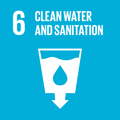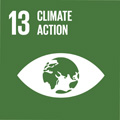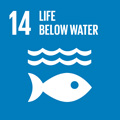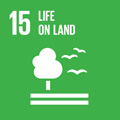- Docente: Sonia Silvestri
- Credits: 12
- SSD: GEO/02
- Language: Italian
- Moduli: Sonia Silvestri (Modulo 1) Bruno Campo (Modulo 2) Enrico Dinelli (Modulo 3)
- Teaching Mode: In-person learning (entirely or partially) (Modulo 1); In-person learning (entirely or partially) (Modulo 2); In-person learning (entirely or partially) (Modulo 3)
- Campus: Ravenna
- Corso: First cycle degree programme (L) in Environmental Sciences (cod. 8011)
Learning outcomes
The course provides theoretical and technical knowledge for classification of rocks, forming the planet Earth. Insights on the processes leading to the formation and evolution of landforms will be presented. Students will be able to recognize different types of rocks, read and use topographic and geologic maps.
Course contents
Lithology: Rock forming minerals: structure, genesis, properties, classification. The rock cycle and the most important rock types. Igneous rocks: magma genesis and geologic settings. intrusive and effusive igneous rocks. Sedimentary rocks: types, classification and environment of formation. Metamorphic rocks: metamorphic types and conditions. Field and laboratory obervation to classify the most important rock types.
Geology: Origin of the solar system and the Earth. Internal structure of the Earth. Plate tectonics. Principles of stratigraphy and geochronology, absolute and relative age, chronostratigraphy. Basis of structural geology: faults, folds, thrust. Description of the major sedimentary environments subaerial and submarine (fluvial, glacial, desertic, coastal and deep marine). Geobiology: the role of microbes, geobiological events in the history of Earth. Genesis of Alps and Apennines. The subsurface of the Pianura Padana: sedimentary cycles and principle deposits.
Geomorphology: study the
upper layer of the Earth's crust, which provides rock materials
that can be shaped into landforms by running water, wind, waves and
ice. Types of weathering. Erosion, transport, and
deposition. Mass wasting, downslope movement of rock and soil
under the influence of gravity. Study of surface water and
landforms shaped by streams. Drainage system, divide, drainage
basin, patterns, and base level. Description of rock structures as landform control. Description of the factors that control the
variety of coastal landscapes. The work of waves and winds.
Description of glacial landforms and glaciation cycles. Introduction to deserts and
wind-made morphologies.
Basic knowledge in cartography and
interpretation of topographic and geological maps.
Readings/Bibliography
CAPIRE LA TERRA Terza edizione italiana condotta sulla settima edizione americana, GROTZINGER John P., JORDAN Thomas H, 2016, Zanichelli, ISBN 978-8808-82123-2
further recommended readings:
Hamblin W.K., Christiansen E.H., Earth's Dynamic System (Tenth Edition), Prentice Hall.
Tarbuck E.J., Lutgens F.K., Tozzi M., Scienze della Terra. Casa
Editrice Principato.
D'Argenio B., Innocenti F., Sassi F.P. (1981) INTRODUZIONE ALLO STUDIO DELLE ROCCE. UTET Torino
Aruta L., Marescalchi P.. CARTOGRAFIA - LETTURA DELLE CARTE. Flaccovio ed.
Mike Leeder and Marta Pérez-Arlucea, (2006), PHYSICAL PROCESSES IN EARTH AND ENVIRONMENTAL SCIENCES, Blackwell Publishing, Oxford , 318p.
Teaching methods
The course will give to students in Environmental Science
background knowledge of Earth Sciences processes and earth
materials.
This involves:
- abilities to understand the time/scale dimensions of earth
processes
- ability to integrate field/laboratory observation with
theoretical concepts
In the framework of the course some basic knowledge of cartography
will be provided
The students will be involved in different ways, including report
writing, laboratory work, ongoing tests developing a more critical
consciousness
Assessment methods
Oral examination and written test.
Mid-term examination at the end of the module of lithology.
The questions are intended to evaluate if the candidate has the basic knowledge of the arguments illustrated in the course.
Teaching tools
LCD projector
Wooden crystal models. Rocks and minerals specimen.
Topographic and geologic maps.
usual equipment for field work: maps. hammer, lens, camera,
ecc
Field trips.
Students who need compensatory tools for reasons related to disabilities or specific learning disorders (SLD) can directly contact the Service for Students with Disabilities (disabilita@unibo.it [mailto:disabilita@unibo.it] ) and the Service for Students with learning disabilities (dsa@unibo.it [mailto:dsa@unibo.it] ) to agree on the adoption of the most appropriate measures.
Office hours
See the website of Sonia Silvestri
See the website of Bruno Campo
See the website of Enrico Dinelli
SDGs




This teaching activity contributes to the achievement of the Sustainable Development Goals of the UN 2030 Agenda.
